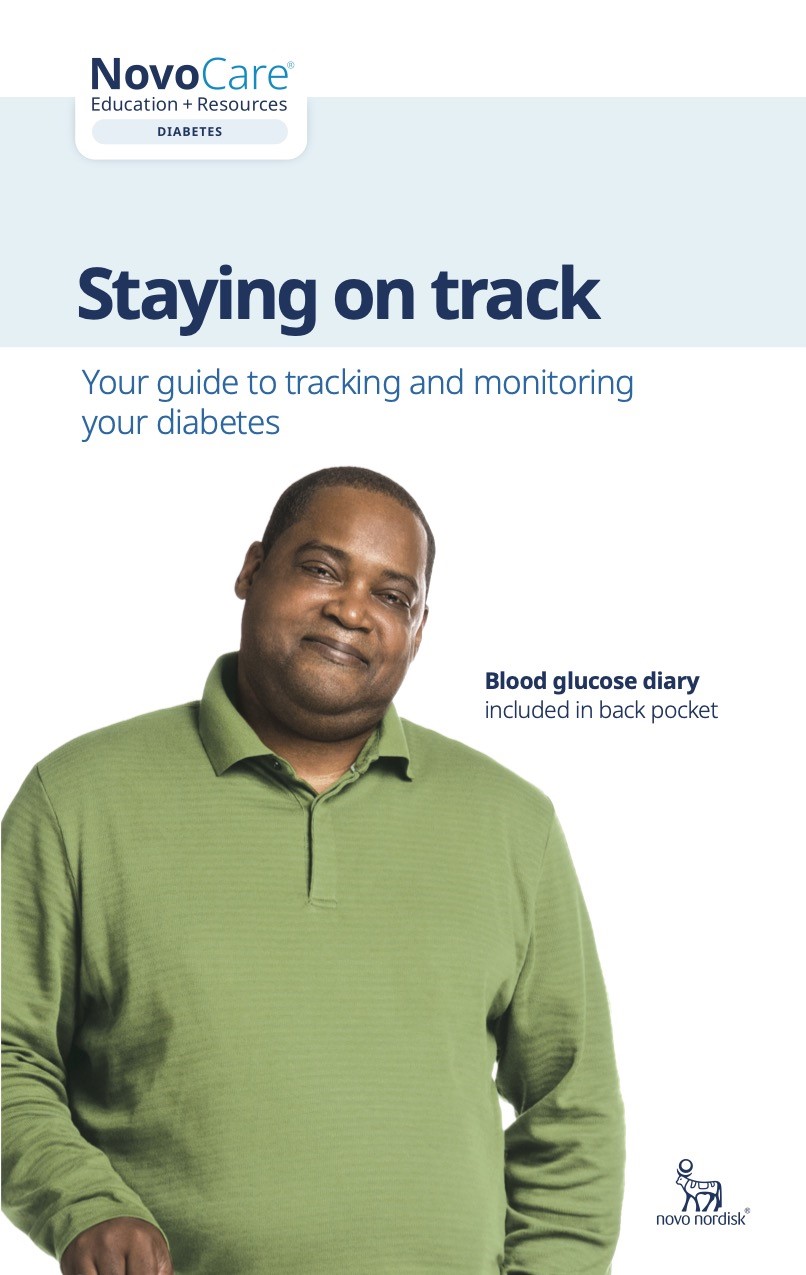
STAYING ON TRACK
Keep your eyes on the prize

Blood glucose tracking isn’t always convenient. But it is an essential part of taking care of your diabetes.

Getting and keeping your blood glucose levels in check can be stressful, especially when you know that you need to keep doing this. Feeling frustrated from time to time is not uncommon. Try to remember that the more you check your blood glucose, the better you will understand your personal range and know when to adjust your diet, activity, or insulin dose.
If you’re finding yourself struggling, here are some tips to help keep you in a good place and on a healthy track:
- Find a quiet place: No one else needs to know that you are checking blood glucose. It’s natural to want to keep health issues private. Try to find a quiet place where you can be alone to use a meter outside of the home. Fortunately, most meters are very small, quick, and quiet
- Set a routine: Test and record at the same time each day so you remember to do it. Keep your records in a convenient place
- Be in the moment: You may think you can record later because you’ll remember. But in reality, you may not. Recording everything your doctor tells you—snacks, drinks, carbohydrateCarbohydrateCarbohydrates are the main kinds of food that raise blood glucose levels. Your digestive system changes carbohydrates into glucose, and then uses this glucose as a source of energy for your cells.
There are 3 main types of carbohydrates in food: starches (complex carbohydrates), sugars (simple carbohydrates), and fiber. Fiber is the part of plant foods, including fruits, vegetables, and nuts, that you can’t digest. content, and exercise—in the moment will take some of the stress away - Remain curious: A blood glucose reading on its own is not a sign of success or failure. It’s a chance to learn about what impacts your glucose control. These clues can help you manage them better in the future. Learn to spot trends, such as high blood glucose after high carb meals or reduced levels after physical activity
- Don’t be hard on yourself: There is no pass/fail grade attached to blood glucose readings. They are just information. The meter does not judge. It is not an enemy. It is just a tool that can help identify blood glucose patterns to better manage diabetes. That’s why thinking of monitoring your blood glucose as doing “blood glucose checks” rather than “testing your blood glucose” may be a more helpful way to look at things
See how technology can help you

With today’s meters, keeping track of blood glucose should be quick and easy. It’s important to stay with it, because frequent blood glucose checks make it possible to manage diabetes better. And blood glucose checks provide a good look at how eating, activity, and insulin affect blood glucose.
Some people with type 2 diabetes are using a newer style of device for continuous glucose monitoring (CGM). It has a sensor that can detect blood glucose levels for up to 3 months. A little transmitter worn on the body sends blood glucose information from the sensor to a phone app. If you’re interested, ask your doctor if a CGM might be right for you.
Some CGM devices show your blood glucose reading at all times on a receiver, smartphone or smartwatch. An alarm will go off if your blood glucose is going up or down too quickly. Others need you to check your blood glucose by running the receiver over the sensor from time to time.
Most of these devices still require finger-stick checks to calibrate the machine. Check the device’s user guide to learn if you need to check, and if so, how often you need to do it.



